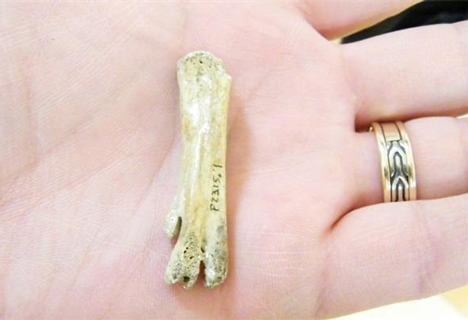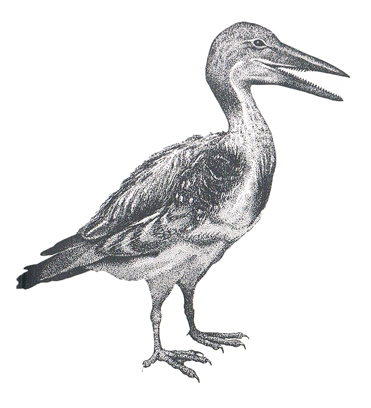Scientists Identify a New Species of Late Cretaceous Bird
An international team of Russian, American and Canadian scientists have published details of their work on the fossilised toe bone of a toothed bird that hunted in fresh water, declaring it a new species. Named Brodavis americanus, this Late Cretaceous fish-eater swam in rivers and probably watched herds of horned dinosaurs and maybe even Tyrannosaurus rex coming down to the river bank in order to drink.
Brodavis americanus
The fossilised fragments of bone that enabled the scientists to name a new species of prehistoric bird were found in the Canadian province of Saskatchewan (Frenchman Formation), a series of sedimentary deposits that date from the very end of the Cretaceous period (Maastrichtian faunal stage). This is just one species that has been assigned to a newly named family of primitive birds known as the Brodavidae. In total, four species, part of one genus have been ascribed to this ancient, bird family.
Other fossils of this type of bird have been found in South Dakota (United States) and in Upper Cretaceous rock formations in Mongolia.
Brodavidae Fused Metatarsal Fossil Bones
Picture credit: Royal Saskatchewan Museum
Late Cretaceous Birds
The evolution of Late Cretaceous birds is now much better understand, thanks mainly to new fossil discoveries over the last twenty years or so, in conjunction with detailed study of existing, known fossil material held in museum collections. The Brodavidae family have been classified as belonging to the Order Hesperornithiforms, primitive birds that are now extinct. Everything Dinosaur, team members are not entirely sure, but we think one of the characteristics of later forms of primitive birds is that the elongated foot bones called the metatarsals became fused to form a structure known as the tarsometatarsus.
These bones were not fused in earlier Cretaceous bird species such as those found in the Liaoning Province of China which date from the Early Cretaceous. The picture above shows the fused metatarsal toe bones, the discovery providing evidence that the fossils represent a new family of primitive Cretaceous birds.
An Illustration of a Primitive Bird (Brodavidae)
The species referred to as Brodavis americanus was described by Larry Martin of Kansas University (USA), the late Evgeny Kurochkin of the Russian Academy of Sciences and Tim Tokaryk of the Royal Saskatchewan Museum. Whilst a number of Hesperornithiform birds were flightless, living in coastal areas and hunting fish underwater. This particular species is associated with inland, freshwater environments.
The scientists have speculated that the lack of pachyostosis in the fossil bones (thickening of bones to make them denser to counteract buoyancy in water), might mean that unlike other Hesperornithiforms such as Hesperonis from the Western Interior Seaway, Brodavis americanus may have retained the power of flight.
On this “Earth Day”, so lovely to hear about a number of new species added to the fossil record, helping to improve our understanding of the evolution of modern birds.
For models of Late Cretaceous prehistoric animals: Wild Safari Dinosaur Models.







Curious as to the author of the illustration.
The illustration comes from one of Everything Dinosaur’s files, one picture illustrating typical Hesperornithiform spp. We have an extensive reference library of illustrations, pictures etc.